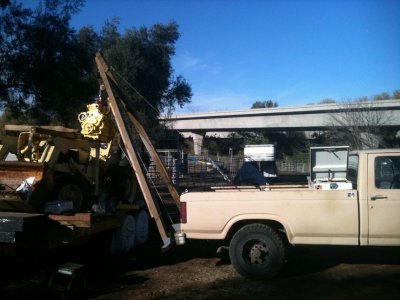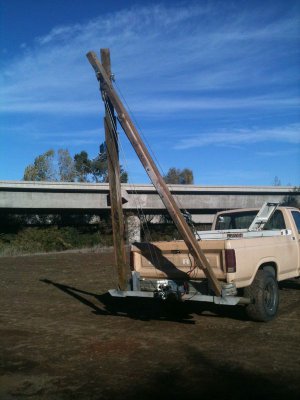- Joined
- Jun 11, 2013
- Messages
- 731
My friend Matt got himself a bridgeport and needed to get it home. This is how he did it.
This was the trailer I made for this series. I had a bunch of people wanting to see the vids but it took time to edit the hours of footage I had and make some shorts of the move.
[video=youtube_share;ywTyDOgKiQY]http://youtu.be/ywTyDOgKiQY[/video]
Onto the real stuff. This vid is of building the pallet under the mill and moving the bridgeport to the driveway. Using a pry bar we slowly lifted the mill off the ground 5/8 of an inch each step.
[video=youtube_share;dZPGUjxI6pE]http://youtu.be/dZPGUjxI6pE[/video]
Here we setup the rig Matt made to lift the bridgeport onto the trailer.
[video=youtube_share;JtXSlVZL9tc]http://youtu.be/JtXSlVZL9tc[/video]
And finally, getting it home and into his garage.
[video=youtube_share;n6p7-qiVr6o]http://youtu.be/n6p7-qiVr6o[/video]
Well, there you have it, moving a bridgeport without any heavy equipment. Hope you enjoyed the series.
This was the trailer I made for this series. I had a bunch of people wanting to see the vids but it took time to edit the hours of footage I had and make some shorts of the move.
[video=youtube_share;ywTyDOgKiQY]http://youtu.be/ywTyDOgKiQY[/video]
Onto the real stuff. This vid is of building the pallet under the mill and moving the bridgeport to the driveway. Using a pry bar we slowly lifted the mill off the ground 5/8 of an inch each step.
[video=youtube_share;dZPGUjxI6pE]http://youtu.be/dZPGUjxI6pE[/video]
Here we setup the rig Matt made to lift the bridgeport onto the trailer.
[video=youtube_share;JtXSlVZL9tc]http://youtu.be/JtXSlVZL9tc[/video]
And finally, getting it home and into his garage.
[video=youtube_share;n6p7-qiVr6o]http://youtu.be/n6p7-qiVr6o[/video]
Well, there you have it, moving a bridgeport without any heavy equipment. Hope you enjoyed the series.


